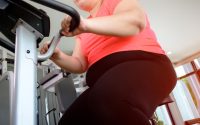‘Groundbreaking’ autism test detects disorder in a single strand of hair
Lock it in.
Scientists are buzzing about new tech that could help diagnose autism in children earlier than ever before.
New York-based LinusBio has created a test that analyzes a single strand of hair for levels of lead and aluminum — all of which are higher in autistic children.
Researchers put the tech to the test in a recent study, using hair samples collected from 486 children in Japan, Sweden and the US. It was shown to accurately predict the disorder 81% of the time.
“We can detect the clear rhythm of autism with just about 1 centimeter of hair,” LinusBio co-founder Manish Arora excitedly told NBC in a recent interview.
Currently, an autistic child is diagnosed around the age of 4. The company is hopeful that it could identify autism earlier — before children begin to miss developmental milestones.
In the US, 1 in 44 children who are 8 years old are estimated to have autism, per the Centers for Disease Control and Prevention.

Even the Food and Drug Administration has labeled the study as a “breakthrough” — a designation intended to expedite a trial and approval process of a medical device or test.
“The technology is incredibly novel. The use of hair and the type of measurements they’re doing with hair is innovative,” Dr. Andrea Baccarelli, a Columbia University professor of environmental health sciences who was not involved in the research, told NBC. “It’s groundbreaking.”
The study analyzing the tech company’s test was published last month in the Journal of Clinical Medicine.
While the LinusBio test is not meant to be relied on by itself, it can act as a tool for clinicians to see what the child has been exposed to, including metals and other substances that stick around in human hair.
LinusBio’s research focused on the environmental factors that could contribute to the development of autism. More specifically, they realized they could find out which substances and toxins children -— even as young as infants — were exposed to over time.
In previous studies, substances such as lead, arsenic, copper, selenium, iron and magnesium have been linked to the disorder. While scientists are still scratching their heads as to why this is the case, it’s suspected that both environmental exposure and genetics play a role.

Because of their test’s initial success, the developers are now expanding the study to 2,000 participants. However, researchers not involved in the study say parents should be cautiously optimistic.
“There is certainly much more work to be done before concluding that this test is a valid measure of autism spectrum disorder risk,” Dr. Scott Myers, a neurodevelopmental pediatrician at the Geisinger Autism & Developmental Medicine Institute, told NBC.


